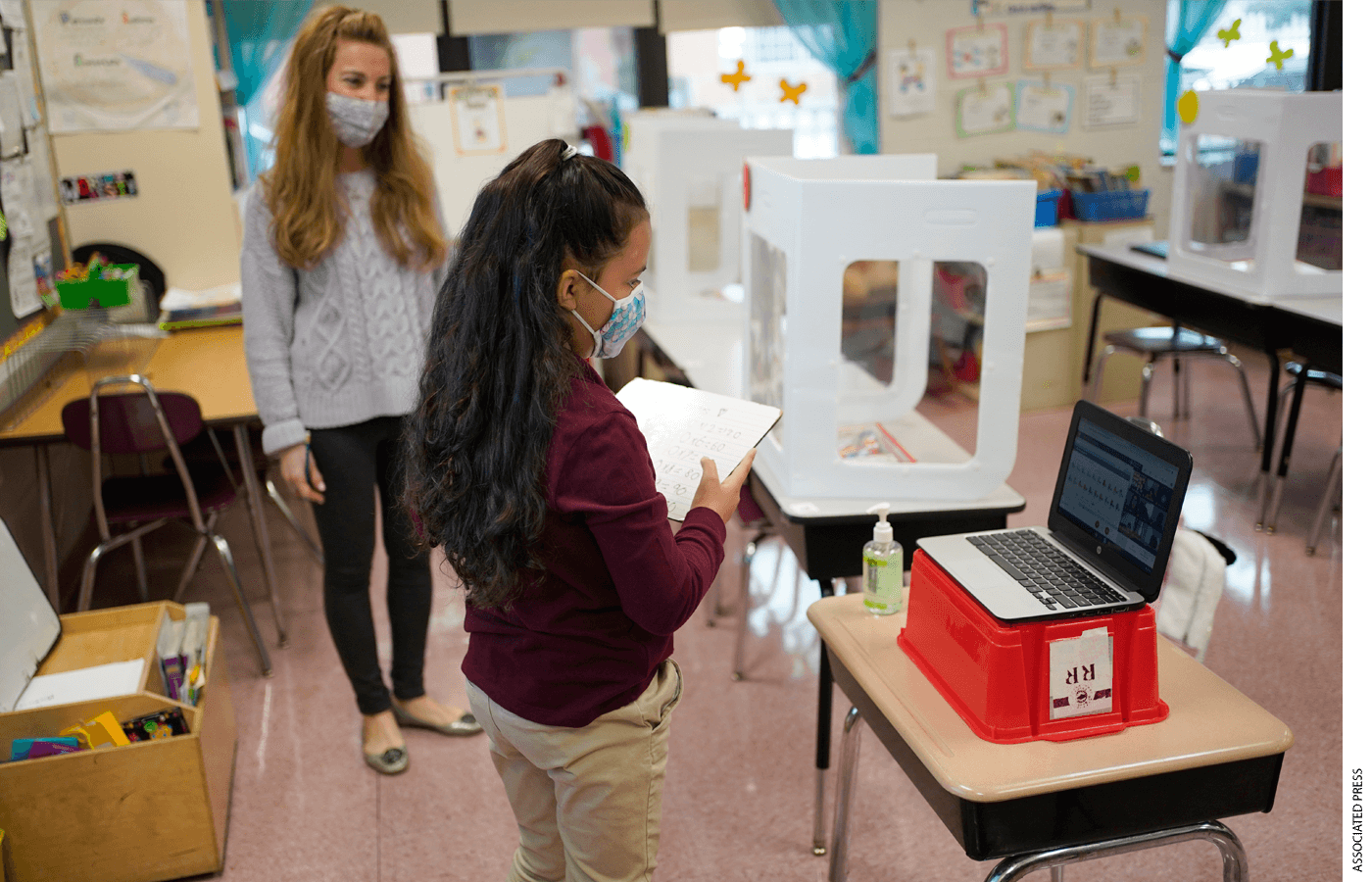
The public view of education technology has evolved over the past 12 months. When schools shut down last spring, frustration with the availability of devices, amount of instruction, and quality of teaching seemed nearly universal. During this past year, there appeared to be some rough consensus that virtual learning—while mostly still mediocre—has clearly improved from last spring.
But that’s all in the past. What I’m far more interested in, looking forward, is how bad ed-tech habits that formed during the shutdown risk compromising instruction and even slowing the return to school next fall.
After all, examples of misused technology are manifold at the moment. There’s the much-derided “Zoom in a room,” where schools nominally reopen their doors for kids—but then have kids sit in a classroom, masked and socially distanced, with Chromebooks and an “adult monitor” (read: babysitter), while the teacher instructs remotely from home. To no one’s surprise, kids find this tedious and stultifying, and there’s plenty of anecdotal evidence that students would rather be home—where they can go maskless, relax, and grab a snack.
There are also the reports that thousands of districts are looking to do four-day weeks in the fall to allow for cleaning, amidst evidence that this is nothing more than hygiene theater running amok. As Robin Lake and Georgia Heyward have observed, “There is real danger that school systems and teachers are getting attached to the four-day week and may lobby to retain the schedule next school year, even after students are largely vaccinated.” They make the obvious point: “We cannot afford to throw away an entire day of learning and student support based on a false scientific premise.” Yet, this schedule is made far easier to justify by the fig leaf of “asynchronous” instruction, which excuses haphazard instruction by allowing for the comfortable illusion that schools are full time.
And there seems to be a newfound comfort with the idea that learning on Chromebooks or iPads is utterly normal. I’ve heard from dozens of parents and teachers who are troubled by the expectation in some schools, even in the earliest grades, that students will spend most of the school day involved in app-based instruction. In fact, I suspect that growing comfort with remote learning helped explain the slow roll on returning to school, as two-day-a-week and four-days-plus-an-asynchronous-day seemed more acceptable because . . . technology.
All of this seems wildly off-base. The point of getting kids back into schools is not so they sit six feet apart and stare at a screen—it’s so that they can interact with classmates and teachers, develop friendships, and receive mentoring. If the ubiquity of digital tools makes schools move more slowly to reclaim the humanity of the schoolhouse, that’s a big problem.
It also misses the point about what technology does well. Tech isn’t a replacement for the human face of schooling; at its best, it augments and supplements it. The goal is to give teachers more time and energy to get to know their students, to put a hand on a shoulder, to ask the right question, to engage a disengaged learner. It’s hard to do all that in the best of circumstances—it’s that much tougher when schools are using tech to normalize remote learning, asynchronous days, or eyeballs glued to devices.
The true potential of ed-tech lies in its ability to do the routine stuff more effectively and efficiently so that educators can devote more time to the human stuff. But rather than seeking ways to use tech more humanely, schools appear headed in the opposite direction right now—relying on tech in ways that threaten to suffocate the human core of the schoolhouse. It’d be a bitter irony if the big result from the COVID-inspired push to universalize access to ed-tech is the entrenchment of the pandemic’s worst, most dehumanizing classroom practices.
Frederick Hess is director of education policy studies at the American Enterprise Institute and an executive editor of Education Next.
This post originally appeared on Rick Hess Straight Up.


